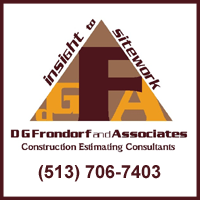 A report on a motion by Cincinnati City Councilmembers Roxanne Qualls and Laketa Cole that would direct the City to create form-based code overlay districts is due back before council by mid-November.
A report on a motion by Cincinnati City Councilmembers Roxanne Qualls and Laketa Cole that would direct the City to create form-based code overlay districts is due back before council by mid-November.
The motion would direct the Department of City Planning to work on expanding the City's zoning code to include the overlay districts and to work with neighborhoods in developing them, and would release $50,000 from a surplus capital account to help fund the process.
The motion was signed by Councilmembers John Cranley, David Crowley, and Cecil Thomas.
While conventional zoning focuses mainly on land use, form-based codes concentrate on each building's form, massing, and relationships to the street and to other buildings.
"Many of our most admired neighborhoods could not be built today under conventional land-use zoning," Qualls says. "That's why cities across the country are adopting a new approach, to reinforce the competitive advantage of their neighborhoods and stimulate new development."
"Form-based codes are a powerful tool for building strong, vibrant neighborhoods, creating a climate for business and residential development, and enhancing the quality of life in our community," Cole says. "They are a response to the sprawl, decline of historic, traditional neighborhoods, and the neglect of pedestrian safety that have resulted from conventional land-use zoning."
Qualls says that form-based code overlays are tailored to address the specific needs of each neighborhood, and involve an intensive and inclusive planning process.
"The form-based code planning process sets out the physical structure of the district in a straightforward way so that planners, citizens and developers can make their shared vision a built reality," Qualls says. "The result is that neighborhoods get what they want – development that is compatible with their history and vision, and results in compact, walkable communities. Developers get what they want – speedy approval of their proposals as long as they conform to the form-based code for the neighborhood."
The idea for form-based code overlay districts was presented in February's Neighborhood Summit.
Since then, a delegation of neighborhood leaders, City staff, developers, and representatives from organizations such as the local chapter of the Urban Land Institute have visited Nashville, which has implemented the districts in areas throughout the city.
And on October 3-4, a two-day conference was held at the Duke Energy Center that included as speakers Nashville planners and developers, Qualls, and the ICSC Alliance.
Several neighborhoods, such as College Hill, Madisonville, Pleasant Ridge, and Westwood, have begun the process of creating overlays in their business districts by taking an inventory of their current neighborhood plans, identifying key community stakeholders, and finding funding resources for the future planning process.
Representatives of Avondale, Clifton, East Price Hill, Kennedy Heights, Walnut Hills, West End, Mount Adams, Mount Airy and Northside have also expressed interest.
"Cincinnati has always been a city of great neighborhoods," Qualls says. "The city’s original streetcar system created neighborhoods with vibrant business districts, where people could stroll to the store and socialize with their neighbors. Our neighborhoods are what many suburban communities try to create artificially - mixed-use, compact, and walkable."
Learn more about form-based codes here, and ask your questions on the message board. Image courtesy of glaserworks.
Thursday, October 23, 2008
Report on form-based code overlays due in November
Posted by
Kevin LeMaster
at
5:10 AM
![]()









